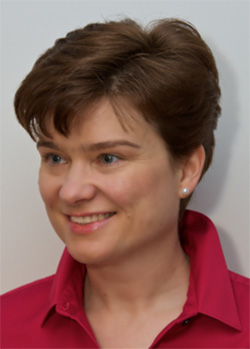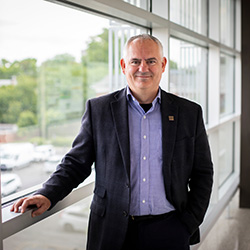Keynotes

Kate Keahey
Argonne National Laboratory; University of Chicago
Abstract
We live in interesting times: new ideas and technological opportunities emerge at
ever-increasing rate in disaggregated hardware, programmable networks, machine learning,
and the edge computing and IoT space to name just a few. These innovations require
an instrument where they can be deployed and investigated, and where new solutions
that those disruptive ideas require can be developed, tested, and shared. To support
a breadth of Computer Science experiments such an instrument—or instruments—has to
provide access to a diversity of hardware configurations, support deployment at scale,
as well as deep reconfigurability so that a wide range of experiments can be supported.
Most importantly—since science does not stand still—such an instrument requires the
capability for constant adaptation to support an ever-increasing range of experiments
driven by emergent ideas and opportunities.
Designing and operating such rapidly evolving scientific instruments is a science
unto itself. In this talk, I will share my experiences in designing and operating
two such instruments at scale. The first one—Chameleon—is an exploratory testbed for
computer science systems research that over the last 8 years has attracted a community
of almost 9,000 users working on well over 1,000 innovative science and education
projects. The second one—FLOTO—is an observational discovery testbed that is in the
process of deploying over a 1,000 edge devices for broadband observation and other
tasks. Lastly, I will also share a few personal principles or guideposts, expressed
as favorite quotations, that over time helped me stay the course when building scalable
scientific instruments.
Bio
Kate Keahey is one of the pioneers of infrastructure cloud computing. She created the Nimbus project, recognized as the first open source Infrastructure-as-a-Service implementation, and continues to work on research aligning cloud computing concepts with the needs of scientific datacenters and applications. To facilitate such research for the community at large, Kate leads the Chameleon project, providing a deeply reconfigurable, large-scale, and open experimental platform for Computer Science research. To foster the recognition of contributions to science made by software projects, Kate co-founded and serves as co-Editor-in-Chief of the SoftwareX journal, a new format designed to publish software contributions. Kate is a Scientist at Argonne National Laboratory and a Senior Fellow at the Computation Institute at the University of Chicago.

“EduceLab and the Quest to Read Herculaneum”
W. Brent Seales
University of Kentucky
Abstract
The rise of computing, the availability of mid-scale infrastructure, and the recent phenomena of big data and machine learning have enabled a remarkable restoration pathway for damaged written material. In this talk I will introduce the NSF-funded EduceLab midscale infrastructure, and then decompose the non-invasive, technical steps required to read a class of damaged, ancient scrolls. I will further discuss the human steps necessary to race toward a digital restoration that will have impact for the scholarly world. The ancient Epicureans taught a materialistic worldview, postulating that particles traveling at the speed of light were responsible for the entire natural world. We are employing the electrons and photons they intuited in the race toward a digital recovery of the very texts that recorded their ideas.
Bio
Dr. W. Brent Seales is the Stanley and Karen Pigman Heritage Science Chair and Professor of Computer Science at the University of Kentucky (UK). He has been a Visiting Scientist with the Google Cultural Institute in Paris, and a Scholar in Residence at the Getty Conservation Institute in Los Angeles. He is a recipient of the UK Alumni Association’s “Great Teacher” award, UK’s “Research Professor” designation, and the Southeastern Conference (SEC) Faculty Achievement Award.
Dr. Seales’ research program now centers on computer vision, artificial intelligence, and visualization applied to challenges in Heritage Science. One specific focus of his work is the digital restoration of badly damaged artifacts, especially those containing writing. His research produced the discovery and revelation of the Hebrew text of Leviticus from within the Scroll from En-Gedi. The text was revealed non-invasively without physically opening the damaged parchment of the scroll, proving it to be one of the oldest known copies of the Levitical text. Seales’ work in developing “virtual unwrapping” has led to numerous other applications and research efforts, helping to inspire a new generation of innovation and creativity in Heritage Science.